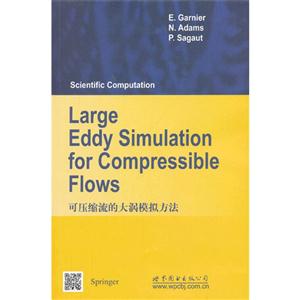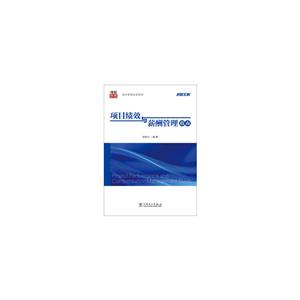可压缩流的大涡模拟方法

|
可压缩流的大涡模拟方法作者:(法)加尼尔 著 开 本:24开 书号ISBN:9787510058202 定价:49.0 出版时间:2013-03-01 出版社:世界图书出版公司 |
可压缩流的大涡模拟方法 目录
1 introduction
2 les governing equations
2.1 preliminary discussion
2.2 governing equations
2.2.1 fundamental assumptions
2.2.2 conservative formulation
2.2.3 alternative formulations
2.3 filtering operator
2.3.1 definition
2.3.2 discrete representation of filters
2.3.3 filtering of discontinuities
2.3.4 filter associated to the numerical method
2.3.5 commutation error
2.3.6 favre filtering
2.3.7 summary of the different type of filters
2.4 formulation of the filtered governing equations
2.4.1 enthalpy formulation
2.4.2 temperature formulation
2.4.3 pressure formulation
2.4.4 entropy formulation
2.4.5 filtered total energy equations
2.4.6 momentum equations
2.4.7 simplifying assumptions
2.5 additional relations for les of compressible flows ..
2.5.1 preservation of original symmetries
2.5.2 discontinuity jump relations for les
2.5.3 second law of thermodynamics
2.6 model construction
2.6.1 basic hypothesis
2.6.2 modeling strategies
e. gamier et al., large eddy simulation for compressible flows,
scientific computation,
springer science + business media b.v. 2009
3 compressible turbulence dynamics
3.1 scope and content of this chapter
3.2 kovasznay decomposition of turbulent fluctuations
3.2.1 kovasznay's linear decomposition
3.2.2 weakly nonlinear kovasznay decomposition
3.3 statistical description of compressible turbulence
3.4 shock-turbulence interaction
3.4.1 introduction to the linear interactionapproximation theory
3.4.2 vortical turbulence-shock interaction
3.4.3 mixed-mode turbulence-shock interaction
3.4.4 consequences for subgrid modeling
3.5 different regimes of isotropic compressible turbulence
3.5.1 quasi-isentropic-turbulence regime
3.5.2 nonlinear subsonic regime
3.5.3 supersonic regime
3.5.4 consequences for subgrid modeling
4 functional modeling
4.1 basis of functional modeling
4.1.1 phenomenology of scale interactions
4.1.2 basic functional modeling hypothesis
4.2 sgs viscosity
4.2.1 the boussinesq hypothesis
4.2.2 smagorinsky model
4.2.3 structure function model
4.2.4 mixed scale model
4.3 isotropic tensor modeling
4.4 sgs heat flux
4.5 modeling of the subgrid turbulent dissipation rate
4.6 improvement of sgs models
4.6.1 structural sensors and selective models
4.6.2 accentuation technique and filtered models
4.6.3 high-pass filtered eddy viscosity
4.6.4 wall-adapting local eddy-viscosity model
4.6.5 dynamic procedure.
4.6.6 implicit diffusion and the implicit les concept
explicit structural modeling
5.1 motivation of structural modeling
5.2 models based on deconvolution
5.2.1 scale-similarity model
5.2.2 approximate deconvolution model
5.2.3 tensor-diffusivity model
5.3 regularization techniques
5.3.1 eddy-viscosity regularization
5.3.2 relaxation regularization
5.3.3 regularization by explicit filtering
5.4 multi-scale modeling of subgrid-scales
5.4.1 multi-level approaches
5.4.2 stretched-vortex model
5.4.3 variational multi-scale model
relation between sgs model and numerical
discretization
6.1 systematic procedures for nonlinear error analysis
6.1.1 error sources
6.1.2 modified differential equation analysis
6.1.3 modified differential equation analysis in spectral
space
6.2 implicit les approaches based on linear and nonlinear discretization schemes
6.2.1 the volume balance procedure of schumamm
6.2.2 the kawamura-kuwahara scheme
6.2.3 the piecewise-parabolic method
6.2.4 the flux-corrected-transport method
6.2.5 the mpdata method
6.2.6 the optimum finite-volume scheme
6.3 implicit les by adaptive local deconvolution
自然科学 物理学 应用物理学
在线阅读
- 最新内容
- 相关内容
- 网友推荐
- 图文推荐
零零教育社区:论坛热帖子
| [高考] 2022 西安电子科技大学《软件工程》大作业答案 (2022-04-25) |
| [家长教育] 孩子为什么会和父母感情疏离? (2019-07-14) |
| [教师分享] 给远方姐姐的一封信 (2018-11-07) |
| [教师分享] 伸缩门 (2018-11-07) |
| [教师分享] 回家乡 (2018-11-07) |
| [教师分享] 是风味也是人间 (2018-11-07) |
| [教师分享] 一句格言的启示 (2018-11-07) |
| [教师分享] 无规矩不成方圆 (2018-11-07) |
| [教师分享] 第十届全国教育名家论坛有感(二) (2018-11-07) |
| [教师分享] 贪玩的小狗 (2018-11-07) |






